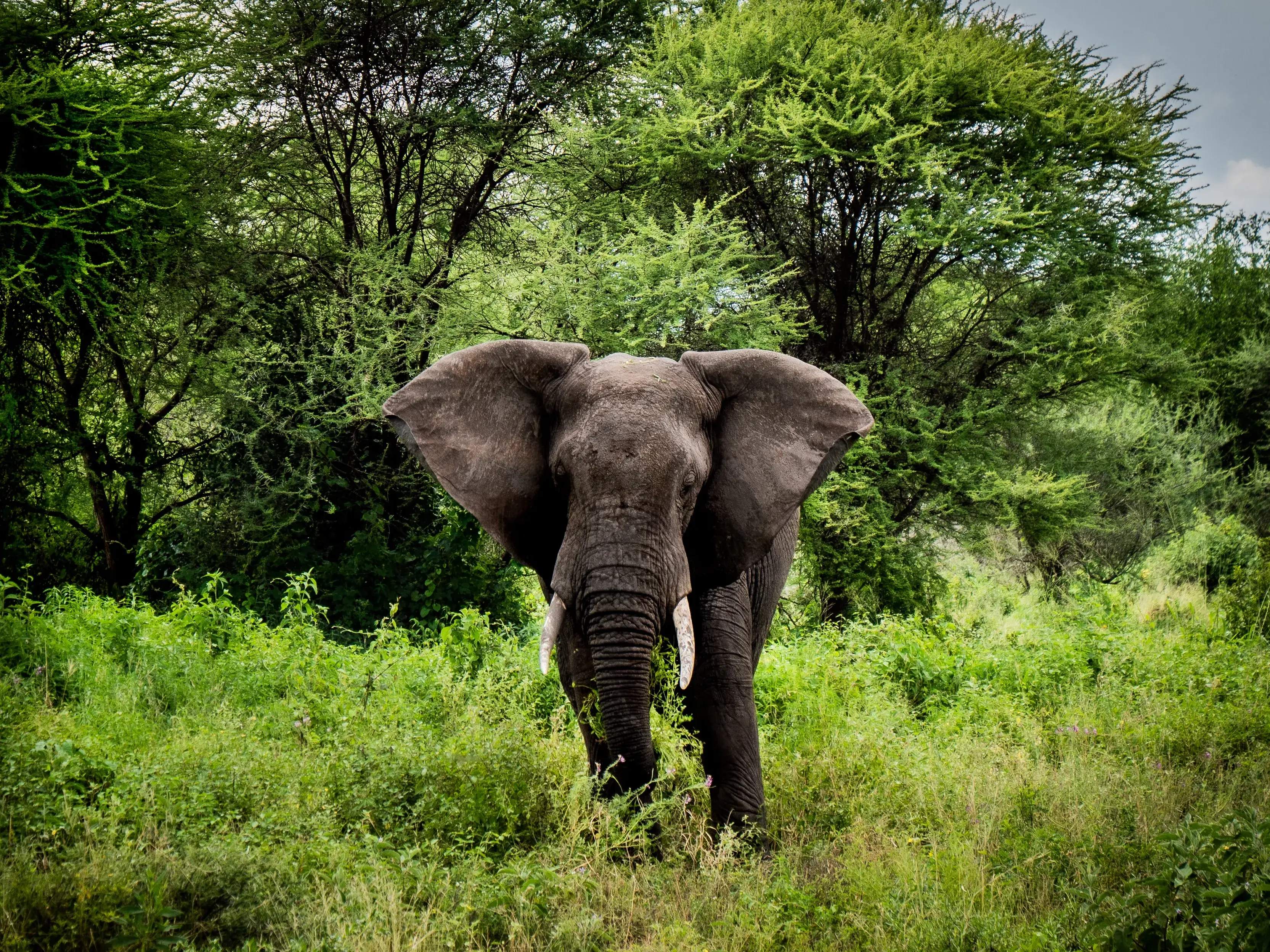
Gombe National Park is a small but renowned protected area located in western Tanzania, along the shores of Lake Tanganyika. Covering an area of approximately 52 square kilometers (20 square miles), it is one of the smallest national parks in Tanzania but holds great significance as the site of the pioneering research on wild chimpanzees conducted by Dr. Jane Goodall. Established in 1968, Gombe is famous for its population of habituated chimpanzees and its contribution to the understanding of these remarkable primates.
Gombe National Park is home to a population of around 150 chimpanzees, making it one of the best places in the world to observe these fascinating primates in their natural habitat. The park's chimpanzees are habituated to human presence, allowing visitors to observe their behavior up close. Guided trekking excursions lead visitors through the forest in search of chimpanzee groups, providing opportunities to witness their social interactions, feeding habits, and daily routines. Gombe's chimpanzees have been the subject of long-term research, contributing valuable insights into their behavior and ecology.
Despite its small size, Gombe National Park is home to a rich diversity of flora and fauna. The park's forested slopes are inhabited by a variety of wildlife, including olive baboons, red colobus monkeys, and blue monkeys. Birdwatchers will delight in the park's avian residents, which include numerous species of forest birds such as turacos, hornbills, and sunbirds. The lush vegetation of Gombe provides a haven for biodiversity, with countless plant species adding to the park's ecological richness.
Gombe National Park's western boundary is defined by the crystal-clear waters of Lake Tanganyika, Africa's second-deepest lake and one of the oldest freshwater lakes in the world. The lake's shoreline offers breathtaking views and opportunities for relaxation and recreation. Visitors can swim, snorkel, or simply enjoy the serene beauty of the lake and its surroundings. Boat trips on the lake provide a chance to explore its diverse aquatic life, including colorful cichlid fish and freshwater snails.
Gombe National Park has played a crucial role in the conservation of chimpanzees and their habitat. Dr. Jane Goodall's groundbreaking research put Gombe on the map and raised awareness about the importance of protecting these endangered primates. Today, the park continues to be a center for research and conservation efforts, with projects focused on monitoring chimpanzee populations, mitigating human-wildlife conflicts, and promoting sustainable tourism. Gombe's conservation legacy serves as a model for primate conservation initiatives worldwide.
The best time to visit Gombe National Park is during the dry season, from June to October, when chimpanzees are easier to find as they forage near the shores of Lake Tanganyika. The dry season also offers pleasant weather and clear skies, ideal for trekking and wildlife viewing. The wet season, from November to May, brings lush greenery to the park and is a great time for birdwatching and photography. Each season in Gombe has its own unique attractions and highlights, ensuring a memorable experience for visitors.
Gombe National Park is accessible by boat from the town of Kigoma, which can be reached by road or air from major cities like Dar es Salaam and Arusha. Visitors typically take a boat ride across Lake Tanganyika to reach the park's headquarters, where guided trekking excursions into the forest begin. Accommodations within the park range from basic campsites to comfortable lodges, providing options for every type of traveler. Whether you're a wildlife enthusiast, a nature lover, or an adventure seeker, Gombe National Park offers a unique and unforgettable experience in the heart of chimpanzee country.
Ready to embark on your dream adventure? Click the button below to start planning your trip with us!